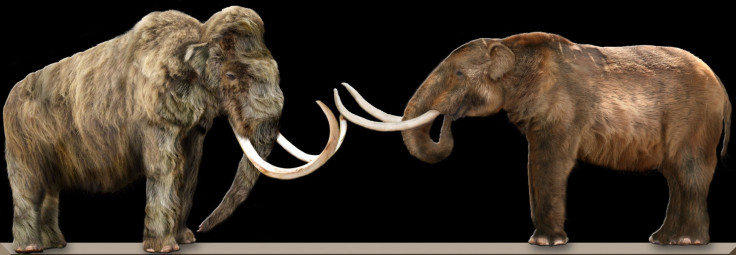Prehistoric Mastodon Jaw Bone Found On Iowa Farm By Teenager

A teenager found a 30-inch jaw bone of a mastodon -- a prehistoric hairy elephant, related to the mammoth that has been extinct about 10,000 years ago, on a farm in Iowa, according to LiveScience. The head of the University of Iowa Paleontology Repository and her team picked up the jaw bone and other related bones over the weekend, according to WHOTV.
The owners of the land said they did not want to be identified to keep fossil hunters off their land.
“We were notified a couple of weeks ago that somebody had found a fossil in the middle of a small river on the property,” Tiffany Adrain said. “It was actually a high school student who had found the object, and the landowners contacted us and notified us [and] sent us photographs. Now we could tell right away it was a jaw bone of a mastodon. A mastodon is an extinct, large, hairy elephant."
According to experts, the bone is believed to have belonged to a young mastodon that might have been 7-feet tall.
This past Saturday, a University of Iowa paleontology team was on a farm in southern Iowa to pick up the bone of a prehistoric mastodon. https://t.co/LtoNzvmEJ0
— WHO 13 News (@WHO13news) May 14, 2019
About 30 years ago, the same landowners had found other bones on their land that belonged to a woolly mammoth, WHOTV reported.
“So perhaps our identification of mammoth was incorrect. We rushed to the cabinets, we carefully lifted out the bones, took some photographs of them and sent them to a specialist,” Adrain said. “Right away you know it’s mastodon because of these teeth.”
According to LiveScience, both mastodons and woolly mammoths look like ancient elephants, however, they are not the same species (the 21st century elephants are closely related to mammoths compared to mastodons). Mammoths appeared about 5.1 million years ago in Africa, according to Ross MacPhee, a curator at the American Museum of Natural History in New York. Mastodons, on the other hand, appeared about 27 million to 30 million years ago. Mastodons were primarily found in North and Central America.
Both species are believed to have come from over the land bridge that once connected Russia and Alaska before making their way down to what is now Ohio and northwestern Kentucky.
The repository where the mastodon jaw bone was taken to is also home to several other large mammals found in Iowa within the last 150,000 years. It includes giant ground sloths, giant beavers, short-faced bear, bison, camels, horses. The repository is funded through the University of Iowa, with much of the research funding coming through the National Science Foundation.
© Copyright IBTimes 2025. All rights reserved.





















